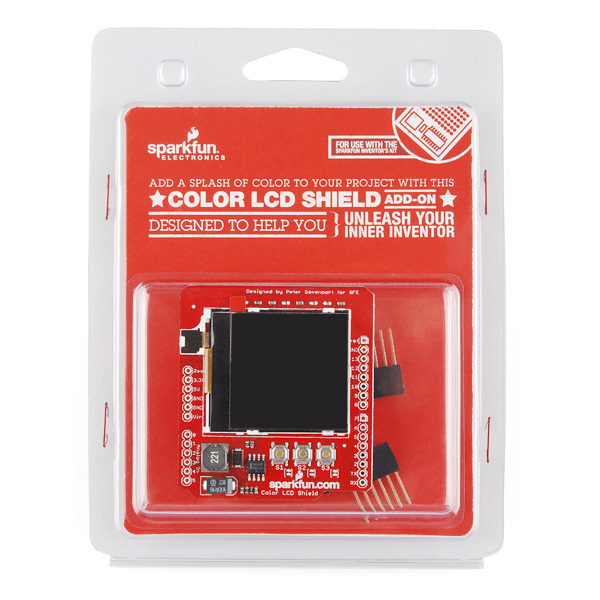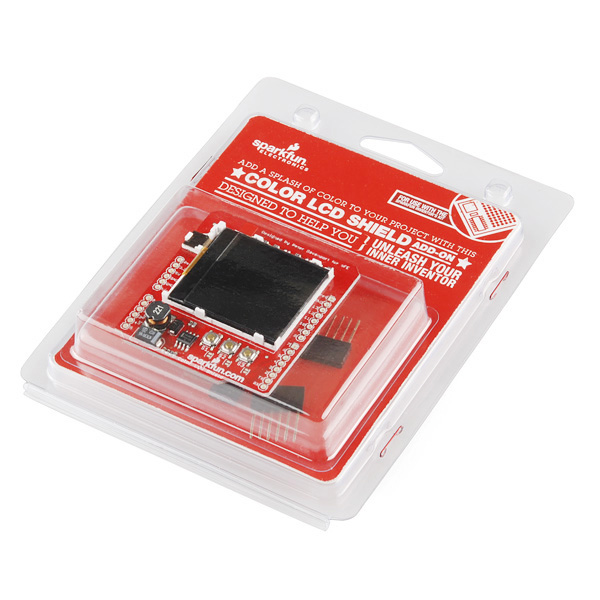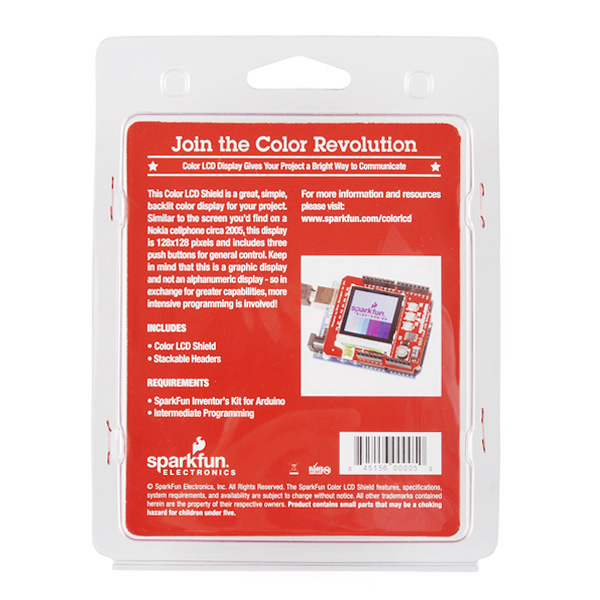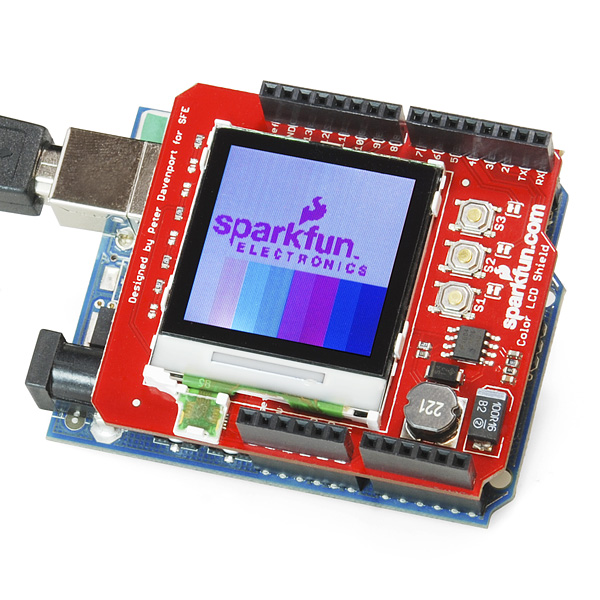Color LCD Shield Retail
Replacement: None. We are no longer carrying this LCD shield in our catalog. This page is for reference only.
The Color LCD Shield, recommended by and designed in partnership with an SFE customer, provides an easy method of connecting the popular Nokia 6100 LCD to your Arduino USB or Pro. The board comes as shown with the 128x128 mini color LCD, as well as a backlight driver circuit (boosts to 7V), and three momentary push-buttons (tied through a jumper to pins D3-5).
The Nokia 6100 LCD is controlled through a 9-bit SPI interface. The control pins of the LCD are connected to the hardware SPI pins of the Arduino (D13 -SCK, D11 - DIO), the CS pin is tied to D9 and the reset pin is connected to D8. Voltage from the '5V' pin of the Arduino is boosted to 7V to power the LCD backlight.
The Nokia 6100 LCD is included with the Color LCD Shield. Headers are not soldered on, but are included.
These come in fancy clamshell packaging meant for our distributors that need it. Regular customers are welcome to order, but we want to limit the amount of extra packaging finding its way into the trash heap. The version without the extra plastic can be found in the related items below.
Note: This shield uses the Epson S1D15G10 or Philips PCF8833 controller (we cannot guarantee which one you will receive. Please see Jim Lynch's tutorial below as to why.
Note: This product is a collaboration with Peter Davenport. A portion of each sales goes back to them for product support and continued development.
- Schematic
- Quickstart Guide
- Color LCD Shield Arduino Library (github)
- Example C Code (ATmega328)
- Example Arduino Library (Thanks Peter!)
- Example Arduino Code (Thanks Mark!)
- Tronixstuff Tutorial
- Interface tutorial by Jim Lynch
Color LCD Shield Retail Product Help and Resources
Core Skill: Soldering
This skill defines how difficult the soldering is on a particular product. It might be a couple simple solder joints, or require special reflow tools.
Skill Level: Noob - Some basic soldering is required, but it is limited to a just a few pins, basic through-hole soldering, and couple (if any) polarized components. A basic soldering iron is all you should need.
See all skill levels
Core Skill: Programming
If a board needs code or communicates somehow, you're going to need to know how to program or interface with it. The programming skill is all about communication and code.
Skill Level: Competent - The toolchain for programming is a bit more complex and will examples may not be explicitly provided for you. You will be required to have a fundamental knowledge of programming and be required to provide your own code. You may need to modify existing libraries or code to work with your specific hardware. Sensor and hardware interfaces will be SPI or I2C.
See all skill levels
Core Skill: Electrical Prototyping
If it requires power, you need to know how much, what all the pins do, and how to hook it up. You may need to reference datasheets, schematics, and know the ins and outs of electronics.
Skill Level: Rookie - You may be required to know a bit more about the component, such as orientation, or how to hook it up, in addition to power requirements. You will need to understand polarized components.
See all skill levels
Comments
Looking for answers to technical questions?
We welcome your comments and suggestions below. However, if you are looking for solutions to technical questions please see our Technical Assistance page.
Customer Reviews
No reviews yet.





can I use external light source for back light? means is back side of LCD is open?
it already has a backlight with the usual reflective surface backing. I'd imagine these little panels are as easy to open up as any other, though, at which point you should be able to remove the existing backlight solution, light panel, etc.
I'm curious, though - what external light source do you wish to use, and why? :)
this is a great board. You can go here to see me explain what I did with it: Space Invaders